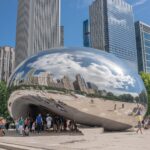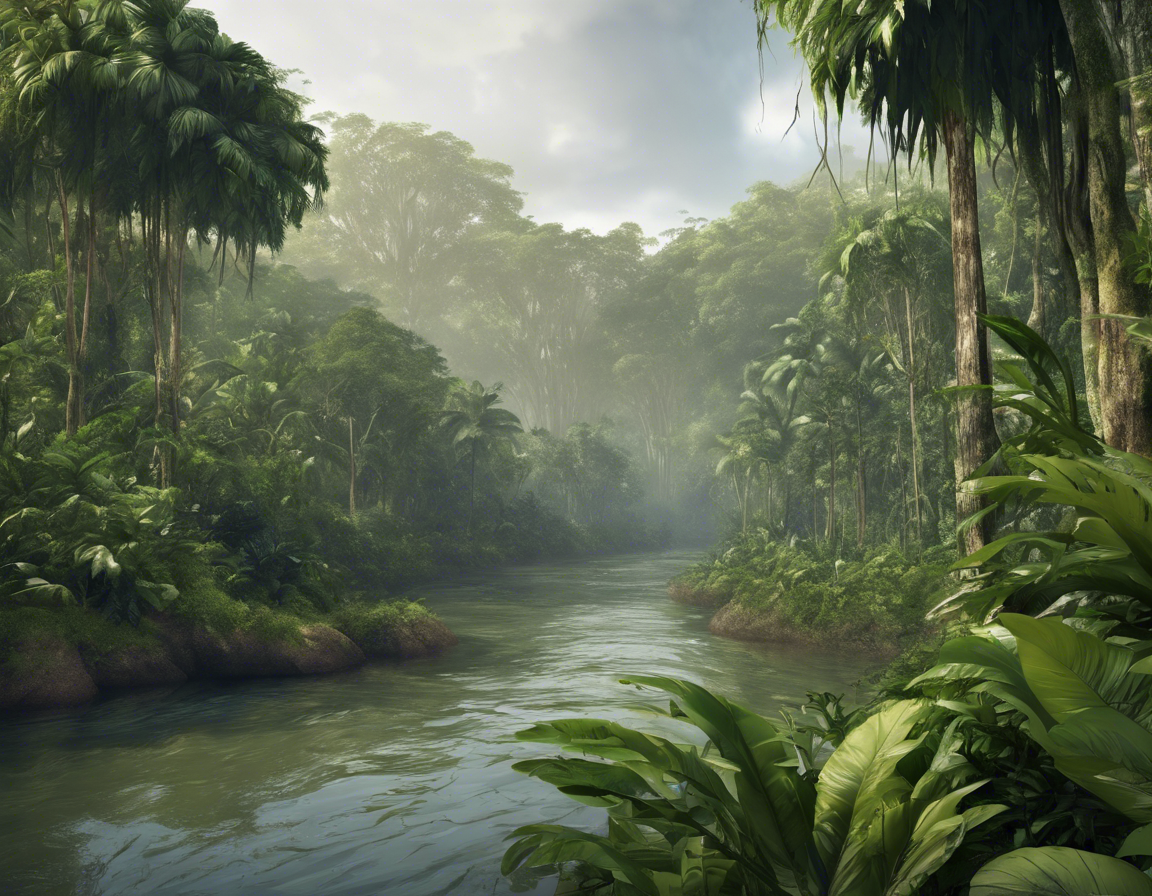
Exploring the Amazon Rainforest is a Breathtaking Destination :
The Amazon Rainforest, often referred to as the “lungs of the Earth,” is a breathtaking destination that promises adventure, romance, and unforgettable experiences. This vast expanse of lush greenery is home to an incredible diversity of wildlife and offers a myriad of activities for couples and families alike. In this article, we will delve into the 10 best things for couples to do, explore family-friendly activities, uncover the best restaurants, and provide essential travel tips for navigating this enchanting jungle.
A Brief History of the Amazon Rainforest:
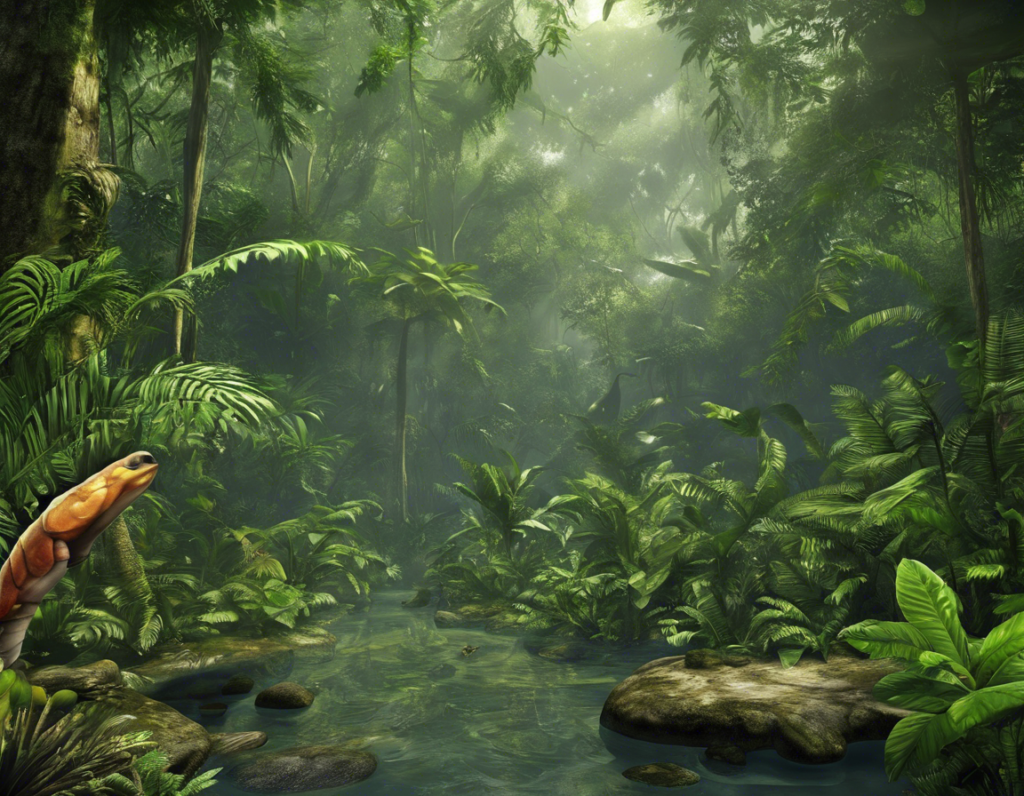
The Amazon Rainforest, often referred to as the “lungs of the Earth,” has a rich and complex history that spans millions of years. This history is not only geological but also cultural, as it has been shaped by both natural forces and human activity. Here’s an exploration of the key historical milestones that have defined the Amazon Rainforest.
Geological History
Formation of the Amazon Basin
Paleozoic Era:
The story begins over 200 million years ago during the Paleozoic era when all land masses were part of the supercontinent Pangaea. As Pangaea broke apart, the Amazon region was submerged under saltwater, which laid the groundwork for future geological transformations12.
Cenozoic Era: Significant changes occurred during the Cenozoic era, particularly with the formation of the Andes Mountains about 15 million years ago. The collision of the South American and Nazca tectonic plates caused dramatic shifts in the landscape, redirecting river flows and creating conditions favorable for rainforest growth23.
Ice Ages: Over millions of years, ice ages further shaped the Amazon. During these periods, sea levels fluctuated significantly, leading to the formation and drainage of massive freshwater lakes in the basin. Eventually, as sea levels fell, water began to flow eastward from the Andes, giving birth to the Amazon River as we know it today23.
Biodiversity Development
The Amazon’s incredible biodiversity is attributed to its dynamic geological history. Periods of isolation during ice ages allowed for speciation among flora and fauna, leading to the rich variety of life found in the rainforest today. The interplay between volcanic activity, tectonic shifts, and climatic changes has fostered an environment where new species can emerge rapidly24.
Human History
Early Inhabitants
Indigenous Cultures: Humans first arrived in South America from Asia over 11,000 years ago. These early inhabitants spread throughout the continent, establishing diverse cultures in various environments, including the Amazon rainforest. By the time European explorers arrived in the 16th century, millions of indigenous people lived in complex societies within this vast ecosystem15.
European Exploration and Colonization
First European Contact:
The first recorded European descent into the Amazon was by Francisco de Orellana in 1541. He embarked on a quest for El Dorado but instead encountered formidable indigenous tribes. His journey down the Amazon River marked a significant moment in history; he returned to Spain with tales that would inspire further exploration and exploitation of the region45.
Colonial Exploitation: Following Orellana’s expedition, European powers showed limited interest in colonizing the dense rainforest initially. However, as rubber became a valuable commodity in the late 19th century, exploitation intensified. The rubber boom led to significant deforestation and displacement of indigenous communities.

Modern Challenges
Deforestation: In recent decades, particularly since the mid-20th century, deforestation has escalated due to agricultural expansion, logging, and infrastructure development. Approximately 15% of the Amazon rainforest has been lost in just 50 years due to these pressures12.
Environmental Awareness: The global awareness regarding environmental issues related to deforestation began gaining momentum in the 1970s with rising concerns about biodiversity loss and climate change. International efforts have since focused on conservation and sustainable development within this critical ecosystem.
Current Status
Today, while there are numerous protected areas such as national parks and reserves aimed at preserving biodiversity and indigenous cultures, challenges remain significant. Financial constraints often hinder effective management and protection efforts against illegal logging and land conversion for agriculture12.
The Amazon Rainforest continues to be a focal point for global environmental discussions as it plays a crucial role in regulating climate patterns and supporting biodiversity essential for life on Earth.
In summary, understanding the history of the Amazon Rainforest—from its geological formation to its current environmental challenges—provides critical insights into its significance as one of our planet’s most vital ecosystems.
10 Best Things for Couples to Do in the Amazon Rainforest:
Exploring the Amazon Rainforest is a unique experience for couples, offering a blend of adventure, romance, and the chance to connect with nature. Here are the 10 best things for couples to do in this breathtaking destination, enriched by insights from various sources.
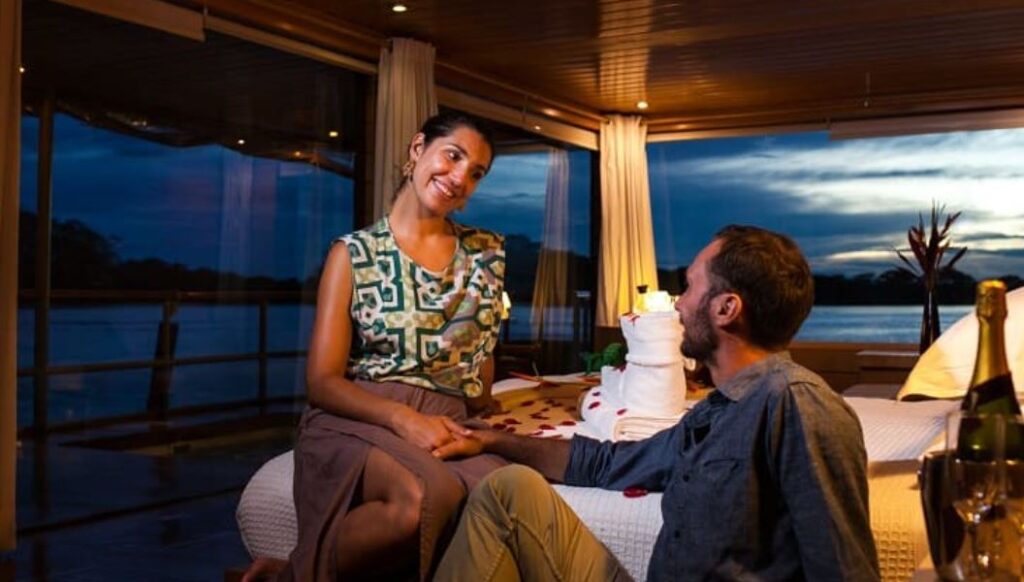
1. Sunset Cruises for Two
A romantic sunset cruise is an unforgettable way to experience the beauty of the Amazon. Couples can board a private boat on serene lagoons, sipping sparkling wine while watching the sun dip below the horizon. This tranquil setting creates a perfect backdrop for intimate conversations and shared moments of awe as the sky transforms into vibrant colors.
2. Candlelit Dinners by the Lagoon
Many lodges, such as La Selva Ecolodge, offer private candlelit dinners overlooking the water. Enjoy gourmet meals crafted from fresh local ingredients while surrounded by the soothing sounds of nature. This unique dining experience allows couples to savor both delicious food and each other’s company in a romantic atmosphere 23.
3. Night Hikes
Embark on guided night hikes to discover the Amazon’s nocturnal wildlife. The rainforest comes alive after dark, with sounds and sights that are both thrilling and mysterious. Spotting glowing eyes in the underbrush or hearing the calls of distant creatures adds an element of adventure that can deepen your bond as you explore together.
4. Piranha Fishing
For a fun and adventurous outing, couples can try their hand at piranha fishing. This activity not only provides a thrill but also offers a chance to learn about these fascinating fish. After catching your dinner, you can cook it together back at your lodge, turning your fishing trip into a memorable culinary experience.
5. Canopy Walks
Take your exploration to new heights with canopy walks that allow you to stroll among the treetops. These elevated paths provide stunning views of the rainforest and opportunities to spot wildlife from above. Sharing this unique perspective can be both exhilarating and romantic, making it a must-do for adventurous couples 46.
6. Private Jungle Lodges
Stay in luxurious jungle lodges that offer privacy and comfort. Many lodges provide exclusive bungalows with breathtaking views and personalized services, such as couple’s massages or spa treatments. This setting allows couples to relax and reconnect amidst the beauty of nature.
7. Wildlife Spotting Tours
Join guided tours focused on spotting wildlife like monkeys, sloths, and exotic birds. Experiencing these incredible creatures in their natural habitat is not only awe-inspiring but also provides ample opportunities for shared excitement and wonder 26.
8. Holistic Ceremonies
Participate in unique ceremonies designed to celebrate love and connection, such as Sacred Union or New Beginnings ceremonies offered by some lodges. These rituals can deepen your bond while immersing you in local traditions and spirituality 23.
9. Adventure Activities
For couples seeking adrenaline-pumping experiences, activities like zip-lining through the canopy or kayaking along tranquil rivers can provide an exciting way to explore the rainforest together. These adventures create lasting memories while allowing you to enjoy each other’s company in a thrilling environment 46.
10. Relaxing in Hammocks
After a day filled with adventure, nothing beats unwinding in a hammock together while listening to the sounds of the rainforest. Many lodges provide hammocks where you can relax with a book or simply enjoy each other’s company amidst nature—perfect for recharging before your next adventure 12.
The Amazon Rainforest offers couples an extraordinary array of experiences that blend romance with adventure. From sunset cruises to wildlife spotting tours, every moment spent in this lush paradise is bound to strengthen your bond and create cherished memories together. Whether you’re seeking relaxation or thrills, the Amazon has something special for every couple!
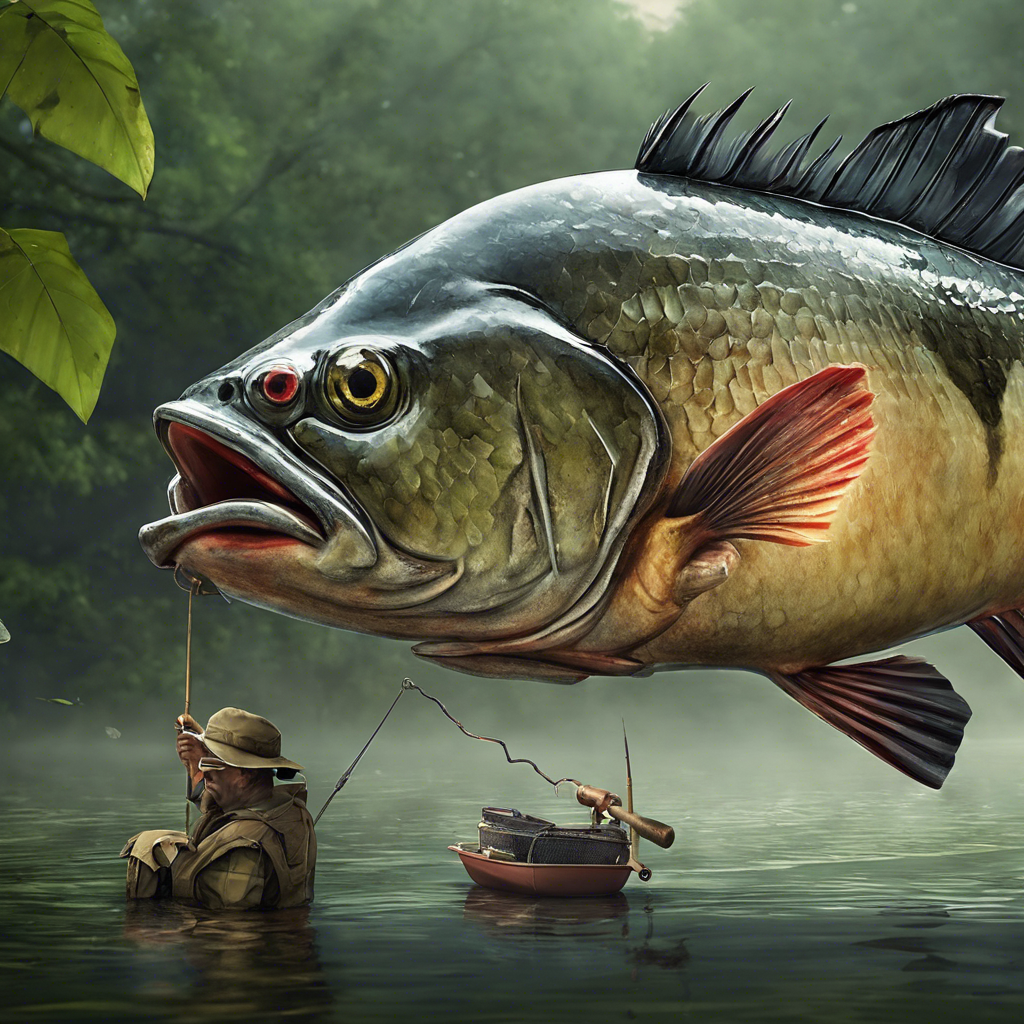
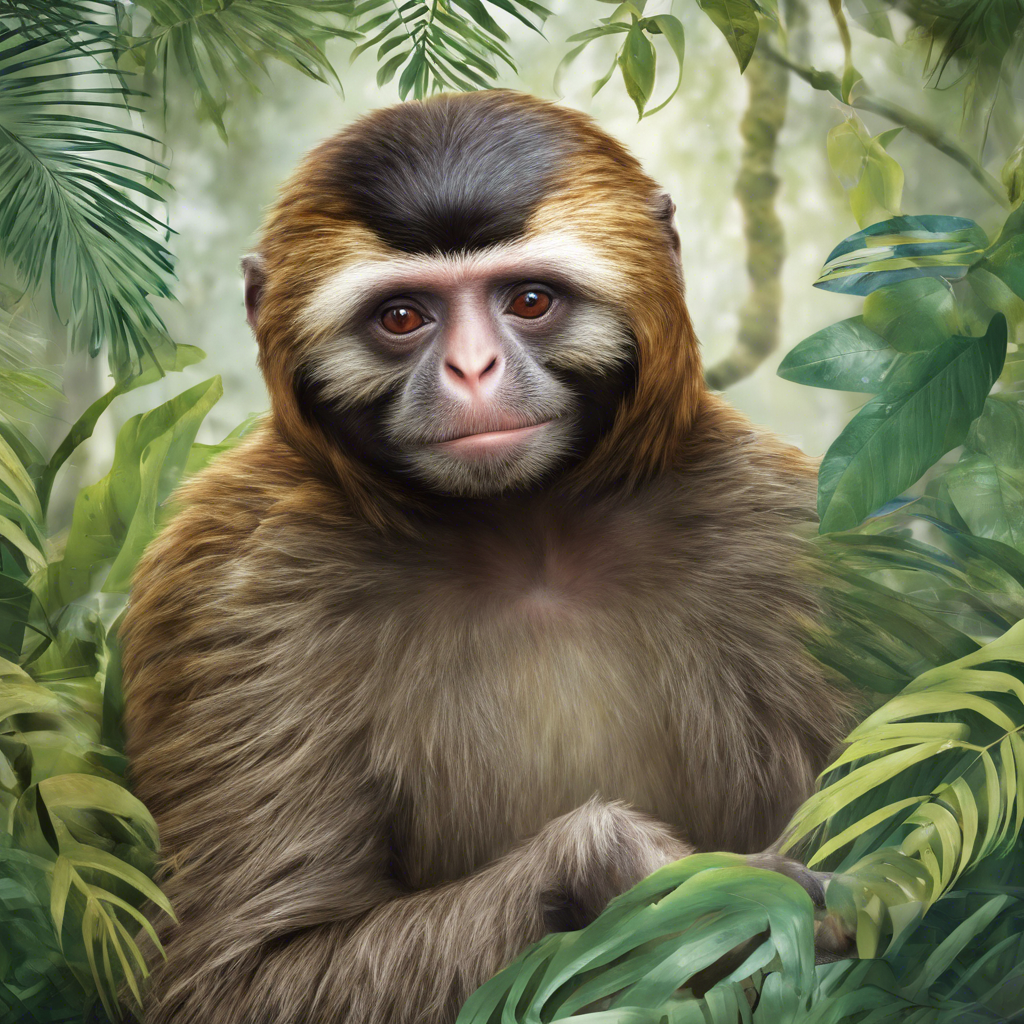
Nightlife in the Amazon: Best Nightclubs:
The Amazon Rainforest, while primarily known for its stunning natural beauty and biodiversity, also offers a vibrant nightlife scene, especially in cities like Manaus and Iquitos. Here’s a closer look at the best nightclubs and nightlife options for couples looking to enjoy their evenings in the Amazon.
Nightlife in Iquitos
Noa Disco
Overview: This is the largest and liveliest dance club in Iquitos. Open Thursday to Saturday, Noa Disco features a mix of international and Latin hits spun by talented DJs.
Atmosphere: The club has a large central bar and various seating options, creating a vibrant atmosphere that fills up around midnight and stays busy until about 4 AM. It’s a great place for couples to dance the night away while enjoying the local nightlife scene 2.
- Arandú Bar: Overview: Located along the malecón (riverwalk), Arandú Bar is known for its lively ambiance, featuring pop and rock music. Setting: The bar has colorful murals and offers sidewalk tables with river views, making it an ideal spot for couples to enjoy drinks while soaking in the atmosphere of Iquitos 2.
- Ajary’s Overview: This bar is set in a large thatched building over the water, providing a truly Amazonian setting. Experience: Couples can reach Ajary’s via an elevated walkway, adding an element of adventure to their night out. The ambiance is relaxed, making it perfect for casual conversations over drinks 2.
- La Noche Overview: A quieter option on the malecón, La Noche offers a more laid-back vibe with sidewalk seating and a second-floor balcony. Ideal For: This bar is perfect for couples looking to enjoy a drink in a more intimate setting while still being close to the lively riverfront 2.
- Nightlife in Manaus Vieiralves District Overview: This area is known for its nightlife with several clubs and show houses featuring diverse music styles including pop, rock, and pagode. Experience: Couples can explore different venues, each offering unique atmospheres and entertainment options. The district is lively but can be less crowded than other areas, making it easier to enjoy conversations .
- Ponta Negra Overview: A trendy neighborhood that combines dining with nightlife, Ponta Negra features various restaurants and bars along the waterfront. Activities: Couples can start their evening with dinner at one of the many restaurants before heading out to nearby bars for drinks and dancing 3.
- Cultural Shows Overview: In addition to traditional nightclubs, Manaus offers cultural performances that showcase local music and dance. Experience: These shows provide a unique insight into Amazonian culture and are often held in venues that create an intimate atmosphere perfect for couples looking to experience something different 3.
- Additional Nightlife Experiences Karaoke Bars: In both Iquitos and Manaus, karaoke bars are popular spots where couples can let loose and sing their hearts out while enjoying local beverages. It’s a fun way to engage with locals and other travelers alike 4. Night Excursions: Many lodges offer night excursions where couples can explore the rainforest under the stars. These tours often include wildlife spotting for nocturnal animals like caimans and night monkeys—an adventurous way to end your day 45.
Conclusion
The nightlife in the Amazon Rainforest region offers couples a mix of vibrant clubs, intimate bars, and unique cultural experiences. Whether dancing until dawn at Noa Disco in Iquitos or enjoying a quiet drink at Ajary’s, there are plenty of options to suit every couple’s taste. Embrace the rhythm of the Amazon after dark; it’s sure to be an unforgettable part of your adventure!
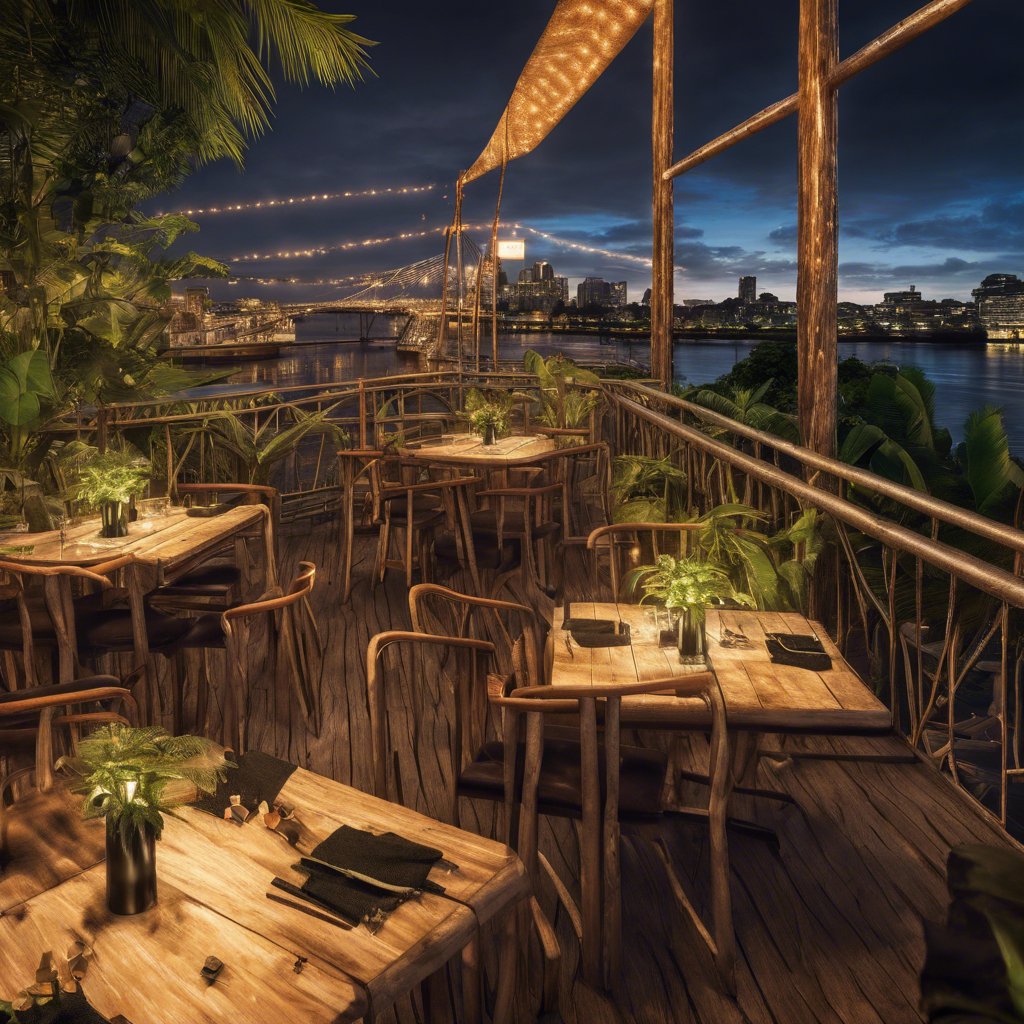
Trending Best Places to Visit:
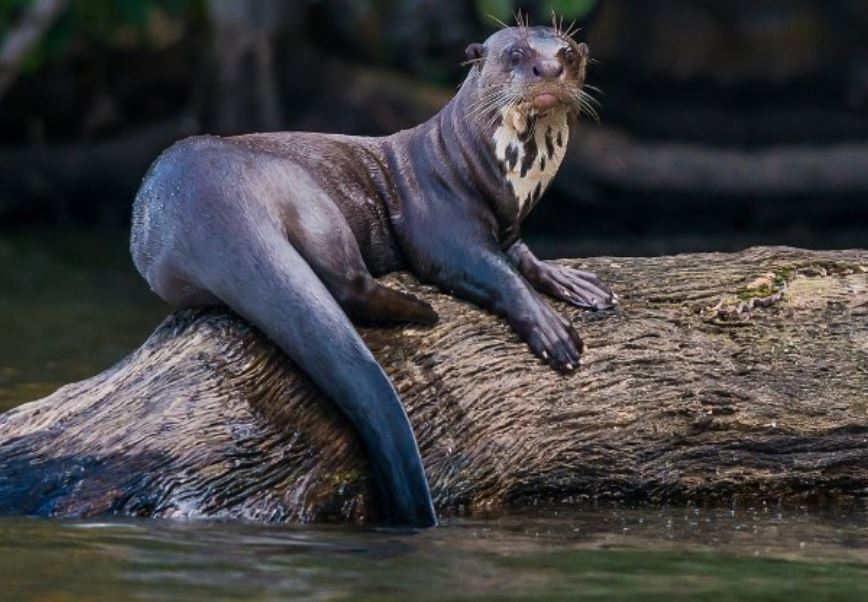
The Amazon Rainforest is a captivating destination filled with diverse ecosystems, rich cultures, and unique experiences. Here are some of the trending best places to visit within the Amazon, highlighting their distinctive attractions and activities.
1. Iquitos, Peru
Iquitos is the largest city in the world that cannot be reached by road, making it a unique gateway to the Amazon. It offers a vibrant atmosphere and serves as a base for exploring nearby rainforest lodges.
Manatee Rescue Center: A popular attraction where visitors can see rescued manatees and learn about conservation efforts.
Floating Market: Experience local culture at the bustling market on the Amazon River, where vendors sell everything from fresh produce to crafts.
2. Puerto Maldonado, Peru
This city is known for its proximity to the Tambopata National Reserve, making it an excellent starting point for eco-tours.
Tambopata Research Center: This lodge provides deep jungle adventures with opportunities to see diverse wildlife, including macaws and jaguars.
Posada Amazonas Lodge: A community-owned lodge that offers guided tours led by local Ese-Eja guides, focusing on wildlife and traditional practices.
3. Manaus, Brazil
Manaus is often considered the heart of the Brazilian Amazon and features several attractions.
Meeting of the Waters: Witness the unique phenomenon where the dark waters of the Rio Negro meet the sandy waters of the Rio Solimões without mixing.
Teatro Amazonas (Amazon Theatre): A stunning opera house built during the rubber boom, showcasing beautiful architecture and hosting cultural events.
4. Cuyabeno Wildlife Reserve, Ecuador
Cuyabeno is known for its rich biodiversity and offers various eco-lodges for immersive experiences in nature.
Wildlife Spotting: Look for pink river dolphins, monkeys, and countless bird species in their natural habitat.
Canoeing Adventures: Paddle through tranquil waterways while enjoying breathtaking scenery.
5. Yasuni National Park, Ecuador
This UNESCO Biosphere Reserve is one of the most biodiverse areas on Earth.
Guided Tours: Engage with local guides who provide insights into both nature and indigenous cultures.
Night Walks: Experience the rainforest’s nocturnal life on guided night hikes.
6. Refugio Amazonas Lodge, Peru
Located in the Tambopata National Reserve, this lodge offers comfortable accommodations with access to various activities.
Canopy Tower: Climb to see canopy-level wildlife such as toucans and monkeys.
Ethnobotanical Tours: Learn about local plants used in traditional medicine during guided walks.
7. Sacha Lodge, Ecuador
Sacha Lodge provides an immersive experience with comfortable accommodations and guided tours through diverse ecosystems.
Observation Tower: Climb to see canopy-level wildlife from above.
Butterfly House: A unique opportunity to learn about local butterfly species.
8. Tahuayo Lodge, Peru
This Rainforest Alliance certified lodge is perfect for wildlife enthusiasts looking to explore deep into the Amazon.
Wildlife Expeditions: Join guided walks to spot various species including pink river dolphins and exotic birds.
Research Center Access: Participate in conservation efforts while enjoying your stay.
9. Aqua Nera Luxury Cruise
For those seeking a more luxurious experience, Aqua Nera offers multi-day cruises along the Amazon River with all-inclusive amenities.
Cultural Visits: Explore local communities along your route.
Wildlife Viewing: Opportunities to see diverse wildlife from your boat.
10. Manu National Park, Peru
One of South America’s most biodiverse areas, Manu National Park offers stunning landscapes and rich wildlife habitats.
Birdwatching Paradise: Home to over 1,000 species of birds.
Guided Expeditions: Explore untouched areas with knowledgeable guides who can help you spot rare species.
The Amazon Rainforest is a treasure trove of natural wonders and cultural experiences. Whether you’re exploring bustling cities like Iquitos or Manaus or venturing into remote reserves like Cuyabeno or Yasuni, each location offers unique adventures that highlight the beauty and importance of this incredible region. Embrace the opportunity to connect with nature while creating unforgettable memories!
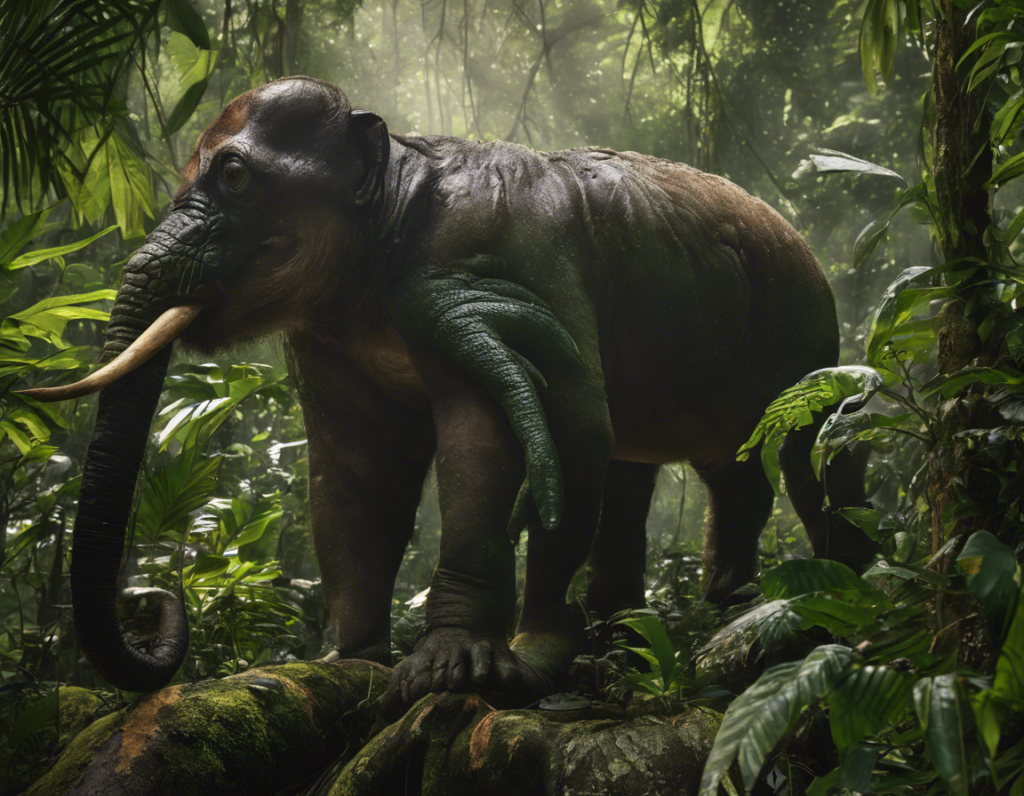
Top Restaurants and Cuisine:
1. ámaZ
Location: Lima, Peru
Overview: Renowned for its innovative use of Amazonian ingredients, ámaZ is a pioneer in promoting sustainable gastronomy. The restaurant features dishes that celebrate the rich biodiversity of the Amazon.
Signature Dishes: Try the grilled fish with açaí sauce or the exotic fruit desserts that highlight local produce.
Experience: The ambiance is modern yet warm, making it perfect for couples looking to enjoy a romantic dinner while learning about Amazonian ingredients.
2. Banzeiro
Location: Manaus, Brazil
Overview: This restaurant focuses on traditional Amazonian cuisine with a contemporary twist. Banzeiro is committed to using fresh, locally sourced ingredients.
Signature Dishes: Don’t miss the tambaqui fish served with banana puree or their famous maniçoba, a hearty dish made from manioc leaves and various meats.
Experience: The decor reflects the local culture, providing an immersive dining experience that celebrates the Amazon’s heritage.
3. Mini-mal
Location: Manaus, Brazil
Overview: Mini-mal offers a creative menu that combines traditional Amazonian flavors with international influences. The restaurant emphasizes sustainability by sourcing ingredients from local producers.
Signature Dishes: The fish tacos with jambu (a local herb) and their refreshing fruit juices are highly recommended.
Experience: The casual yet artistic setting makes it a great spot for couples to relax and enjoy a laid-back meal.
4. Refugio Amazonas Lodge
Location: Tambopata National Reserve, Peru
Overview: This eco-lodge features an open-air dining room that overlooks the rainforest canopy. Meals are prepared using fresh, local ingredients, often inspired by traditional Amazonian recipes.
Signature Dishes: Enjoy dishes like roasted duck in tucupi sauce or grilled fish served with exotic fruits.
Experience: Dining here is not just about the food; it’s about immersing yourself in nature while enjoying gourmet meals.
5. Tahuayo Lodge
Location: Tahuayo River, Peru
Overview: Known for its commitment to sustainable practices, Tahuayo Lodge serves meals made from locally sourced ingredients, offering guests a taste of authentic Amazonian cuisine.
Signature Dishes: Try their fresh river fish dishes or traditional soups made with local herbs.
Experience: The rustic charm of the lodge enhances your dining experience as you enjoy meals surrounded by nature.
Must-Try Amazonian Dishes
1. Maniçoba
This traditional dish is made from finely ground manioc leaves cooked for several days with various meats and sausages. It’s often served during festivals and is a staple in many Amazonian households.
2. Tacacá
A popular soup made from jambu (a local herb) and tucupi (a broth derived from wild manioc). It’s typically served hot in a gourd and is known for its unique flavor profile.
3. Pato no Tucupi
Duck cooked in tucupi sauce, flavored with garlic and herbs, served over rice. This dish is especially popular during local festivals.
4. Freshwater Fish
The Amazon River provides an abundance of fish such as pirarucu and tambaqui. These fish are often grilled or stewed and served with rice and vegetables.
5. Exotic Fruits
The Amazon is home to many unique fruits like açaí, cupuaçu, and bacuri. These fruits are often used in juices, desserts, and ice creams.
Culinary Experiences
Cooking Classes
Many lodges offer cooking classes where guests can learn how to prepare traditional dishes using local ingredients. This hands-on experience allows couples to bond while discovering new culinary skills.
Food Tours
Join guided food tours in cities like Iquitos or Manaus to explore local markets and sample street food. These tours provide insight into the region’s culinary traditions and introduce you to new flavors.
Eco-Friendly Dining
Restaurants like Banzeiro and Mini-mal focus on sustainability by sourcing ingredients from local farmers and indigenous communities. Dining at these establishments not only supports local economies but also promotes conservation efforts in the Amazon.
The culinary scene in the Amazon Rainforest is as diverse as its ecosystems. From upscale restaurants serving innovative dishes to rustic lodges offering authentic meals, there’s something for every palate. Exploring these top restaurants and trying traditional Amazonian dishes will enhance your travel experience while allowing you to connect with the rich culture of this remarkable region!
Top 15 Things for Families to Do in the Amazon Rainforest:
Jungle Trekking: Explore well-marked trails with family-friendly guides.
Monkey Island Visit: Interact with playful monkeys in their natural habitat.
Wildlife Rescue Centers: Learn about conservation efforts while seeing rescued animals up close.
Kayaking Adventures: Paddle through calm waters suitable for all ages.
Cultural Workshops: Participate in crafts or cooking sessions led by local artisans.
Nature Scavenger Hunts: Engage children with fun scavenger hunts focused on flora and fauna.
Camping Under Stars: Spend a night camping in designated areas, surrounded by nature.
Fishing Trips: Enjoy family-friendly fishing excursions on local rivers.
Butterfly Gardens: Visit gardens where kids can learn about various butterfly species.
Riverboat Tours: Take scenic boat rides that are both relaxing and educational.
Zip-lining Adventures: Experience thrilling zip lines through treetops (suitable for older kids).
Visit Local Markets: Explore vibrant markets filled with local crafts and foods.
Photography Tours: Capture family memories amidst stunning landscapes.
Guided Nature Walks: Learn about biodiversity from knowledgeable guides.
Wildlife Spotting at Dusk: Join tours that focus on spotting nocturnal animals.
Transportation Tips:
Navigating the Amazon Rainforest can be an adventure in itself, given its vastness and unique geography. Here are essential transportation tips to help you make the most of your journey through this incredible region.
Getting There
By Air
Major Airports: The primary entry points to the Amazon are Eduardo Gomes International Airport in Manaus, Brazil, and Francisco I. Mendoza Airport in Iquitos, Peru. Direct flights from major cities like São Paulo, Rio de Janeiro, and Lima make these locations accessible.
Local Flights: For deeper exploration, consider taking small regional flights to other towns like Puerto Maldonado or Santarém. These flights provide stunning aerial views of the rainforest.
By Land
Road Travel: While there are few roads in the Amazon, you can reach some areas by bus or taxi from major cities. However, be prepared for long travel times as road conditions can vary significantly.
Buses: Long-distance buses connect cities like Manaus and Iquitos. They are a budget-friendly option but may take longer than flying.
Getting Around
By Boat
River Transportation: The Amazon River and its tributaries serve as the main highways of the rainforest. Most travel within the region is done by boat.
Voadeiras: These small aluminum boats are common for day trips and can navigate smaller waterways.
Ferry Services: Larger ferries operate on major routes, such as from Manaus to Santarém, offering a more leisurely travel experience.
Hammock Boats: For a unique experience, consider traveling on a hammock boat where you can sleep in nets. This is a local way to travel and can be quite economical.
- Canoeing and Kayaking
Guided Tours: Many lodges offer guided canoeing or kayaking excursions that allow you to explore smaller rivers and lakes. This is a great way to spot wildlife while enjoying a more intimate experience with nature.
Self-Guided Options: Some areas may allow for self-guided canoeing; however, ensure you are familiar with the local waterways and safety precautions.
Local Transportation
Motorized Canoes: For reaching remote lodges or villages, motorized canoes are often used. Be prepared for possible delays and varying travel times based on water conditions.
Walking: In some areas, walking is necessary. Trails may not always be well-marked, so hiring a local guide is advisable for safety and navigation.
Tips for Traveling in the Amazon:
Packing Essentials
Lightweight Gear: Bring lightweight, quick-drying clothing suitable for humid conditions. Long sleeves and pants can help protect against insects.
Waterproof Bags: Use waterproof bags for your belongings, especially when traveling by boat where splashes are common.
Comfortable Footwear: Sturdy sandals or hiking boots are recommended for walking on trails or boarding boats.
Safety Considerations
Travel Insurance: Ensure you have travel insurance that covers medical emergencies and unexpected cancellations.
Local Guides: Hiring local guides not only enhances your experience but also ensures safety while navigating unfamiliar terrain.
Communication
Wi-Fi Access: Many lodges now offer Wi-Fi; however, connectivity may be limited in remote areas. Inform your family or friends about your itinerary if you’re going off-grid.
Cultural Respect
Engagement with Locals: When traveling through indigenous territories or local communities, approach with respect and seek permission before taking photos or engaging in cultural practices.
Conclusion
Traveling through the Amazon Rainforest requires careful planning and consideration of transportation options. Whether you choose to fly into major hubs or navigate the waterways by boat, being prepared will enhance your experience in this breathtaking region. Embrace the adventure of exploring one of the world’s most incredible ecosystems!
About Wildlife:
The Amazon Rainforest is one of the most biodiverse regions on the planet, home to an astonishing array of wildlife. This rich ecosystem supports thousands of species, many of which are found nowhere else in the world. Here’s a closer look at the wildlife of the Amazon, including its key species, habitats, and conservation challenges.
Biodiversity Overview
Species Richness
Flora: The Amazon is home to approximately 40,000 plant species, including over 16,000 tree species. This incredible variety provides essential habitats for countless animal species.
Fauna: The region boasts over 1,300 bird species, 427 mammal species, 3,000 fish species, and more than 1,000 amphibians and 400 reptiles. This diversity makes the Amazon a critical area for global biodiversity.
Key Wildlife Species
Mammals
Jaguar: The largest cat in the Americas, jaguars are apex predators that play a crucial role in maintaining the ecosystem’s balance.
Capybara: The world’s largest rodent, capybaras are social animals often found near water bodies.
Sloths: Known for their slow movements, sloths are commonly seen hanging from trees and are a favorite among tourists.
Monkey Species: The Amazon is home to numerous monkey species, including howler monkeys, spider monkeys, and tamarins. Each has unique behaviors and adaptations.
Birds
Macaws: These colorful parrots are iconic symbols of the Amazon and are known for their intelligence and social behavior.
Harpy Eagle: One of the largest and most powerful eagles in the world, it primarily preys on mammals such as sloths and monkeys.
Toucans: Recognizable by their large bills, toucans play a vital role in seed dispersal within the rainforest.
Reptiles and Amphibians
Anacondas: These massive snakes can be found in swamps and slow-moving waters. They are among the largest snakes in the world.
Poison Dart Frogs: Known for their vibrant colors and toxic skin, these frogs are often found in humid areas of the rainforest.
Caiman: Various species of caiman inhabit the waterways of the Amazon, playing an important role in aquatic ecosystems.
Fish
Piranha: Famous for their sharp teeth and carnivorous diet, piranhas are often misunderstood; they play a crucial role in their ecosystem.
Arapaima (Pirarucu): One of the largest freshwater fish in the world, arapaima can grow up to 15 feet long and is a significant part of local fisheries.
Unique Habitats
Oxbow Lakes
These crescent-shaped lakes formed by river meandering provide rich habitats for diverse wildlife. They attract various animals such as caimans, herons, and monkeys.
Clay Licks
Exposed areas along riverbanks where animals come to consume mineral-rich clay. These sites attract large flocks of macaws and other birds, making them prime spots for wildlife watching.
Flooded Forests
During seasonal floods, many forest areas become submerged. This unique habitat supports specialized wildlife adapted to aquatic environments.
Conservation Challenges
Deforestation
The Amazon faces significant threats from deforestation due to agriculture, logging, and infrastructure development. The WWF estimates that if current rates continue, up to 27% of the Amazon could be deforested by 2030.
Climate Change
Changing climate patterns affect rainfall and temperature in the region, impacting both flora and fauna. This can lead to habitat loss and increased vulnerability for many species.
Illegal Wildlife Trade
The illegal trade of wildlife poses a severe threat to many species in the Amazon. This includes poaching for exotic pets or traditional medicine.
Responsible Wildlife Tourism
While exploring the Amazon’s wildlife is an incredible experience, it’s essential to engage in responsible tourism practices:
Choose eco-friendly tour operators that prioritize conservation efforts.
Avoid activities that exploit animals or disrupt their natural behaviors.
Support local communities by participating in sustainable tourism initiatives.
Conclusion
The wildlife of the Amazon Rainforest is a testament to nature’s diversity and resilience. From majestic jaguars to vibrant macaws, each species plays a vital role in this intricate ecosystem. However, ongoing conservation efforts are crucial to protect this invaluable resource from threats like deforestation and climate change. By understanding and respecting this unique environment, we can help ensure its survival for future generations.
Travel Tips for Exploring the Amazon Rainforest:
Exploring the Amazon Rainforest is a thrilling adventure, but it comes with its own set of challenges and considerations. Here are essential travel tips to ensure you have a safe, enjoyable, and memorable experience in this incredible ecosystem.
1. Plan Your Trip Wisely
Best Time to Visit
Dry Season (July to December): This period offers lower humidity and more opportunities for hiking and wildlife spotting. However, some waterways may be less accessible.
Wet Season (January to June): Higher water levels allow access to flooded forests and smaller tributaries, enhancing canoeing experiences. Be prepared for daily rain showers and increased mosquito activity.
Duration of Stay
Aim for at least 5-7 days to fully immerse yourself in the rainforest experience. This allows time for multiple excursions and relaxation.
2. Choose Your Accommodation
Jungle Lodges vs. Cruises
Lodges: Many offer all-inclusive packages that include meals, guided tours, and transportation from major cities like Manaus or Iquitos. Research lodges that align with your comfort level—options range from basic to luxury.
River Cruises: Consider a multi-day cruise along the Amazon River for a unique perspective. These cruises often include excursions to explore the rainforest.
3. Packing Essentials
Clothing
Lightweight, Breathable Fabrics: Choose moisture-wicking materials that dry quickly. Long sleeves and pants help protect against insects.
Rain Gear: A waterproof jacket or poncho is essential due to unpredictable rain.
Footwear: Waterproof hiking boots or rubber boots are ideal for muddy trails.
Other Essentials
Insect Repellent: Use a strong repellent containing DEET or picaridin to ward off mosquitoes.
Water Bottle: Stay hydrated, but only drink bottled or purified water.
Small Backpack: Carry snacks, water, and essentials during excursions.
4. Health Precautions
Vaccinations
Consult with a healthcare provider about recommended vaccinations (e.g., yellow fever, typhoid) before traveling.
Insect Protection
In addition to repellent, consider wearing light-colored clothing and using mosquito nets when sleeping.
Avoiding Waterborne Illnesses
Be cautious about swimming in natural water bodies due to potential parasites. Always ask your guide about safe swimming areas.
5. Engage Local Guides
Hiring local guides enhances your experience by providing valuable insights into the flora and fauna of the rainforest. They can also ensure your safety while navigating unfamiliar terrain.
6. Respect Nature and Local Cultures
Wildlife Interaction
Observe wildlife from a distance; do not feed or disturb animals. This helps preserve their natural behaviors and habitats.
Cultural Sensitivity
When visiting indigenous communities, be respectful of their customs and traditions. Always ask permission before taking photographs.
7. Transportation Tips
Getting There
Fly into major hubs like Manaus or Iquitos, then use local transportation (boats or buses) to reach your destination.
Local Travel
Expect to travel by boat for most excursions within the rainforest. Be prepared for varying travel times based on river conditions.
8. Stay Connected
While many remote areas may have limited connectivity, check with your lodge about Wi-Fi availability if staying connected is important to you.
9. Embrace Flexibility
Traveling in the Amazon can be unpredictable due to weather conditions or logistical challenges. Allow extra time in your itinerary for unexpected delays or changes.
10. Enjoy the Experience!
Take time to soak in the sights, sounds, and smells of the rainforest. Participate in activities like night hikes, canoeing, or cultural workshops to make the most of your adventure.
Conclusion
Exploring the Amazon Rainforest is an extraordinary experience filled with adventure and discovery. By planning carefully, packing wisely, engaging local guides, and respecting nature and local cultures, you can ensure a safe and enriching journey through one of the world’s most fascinating ecosystems!
Exploring the Amazon Rainforest offers couples and families an unparalleled adventure filled with opportunities to connect with nature, each other, and diverse cultures. From thrilling activities like piranha fishing to serene moments spent under starlit skies, every experience is bound to create lasting memories while fostering awareness about this vital ecosystem’s importance.
Whether you’re seeking romance or family fun, there’s no shortage of excitement waiting in this magnificent jungle paradise!



